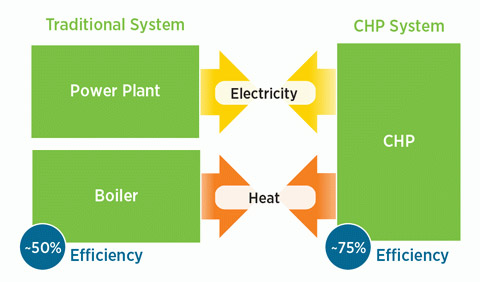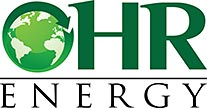
How Does Cogeneration Work

Combined heat and power (CHP), also known as cogeneration, is:
- The concurrent production of electricity or mechanical power and useful thermal energy (heating and/or cooling) from a single source of energy.
- A type of distributed generation, which, unlike central station generation, is located at or near the point of consumption.
- A suite of technologies that can use a variety of fuels to generate electricity or power at the point of use, allowing the heat that would normally be lost in the power generation process to be recovered to provide needed heating and/or cooling.
CHP technology can be deployed quickly, cost-effectively, and with few geographic limitations. CHP can use a variety of fuels, both fossil- and renewable-based. It has been employed for many years, mostly in industrial, large commercial, and institutional applications. CHP may not be widely recognized outside industrial, commercial, institutional, and utility circles, but it has quietly been providing highly efficient electricity and process heat to some of the most vital industries, largest employers, urban centers, and campuses in the United States. It is reasonable to expect CHP applications to operate at 65-75% efficiency, a large improvement over the national average of ~50% for these services when separately provided.
(Information courtesy of www.energy.gov.)
